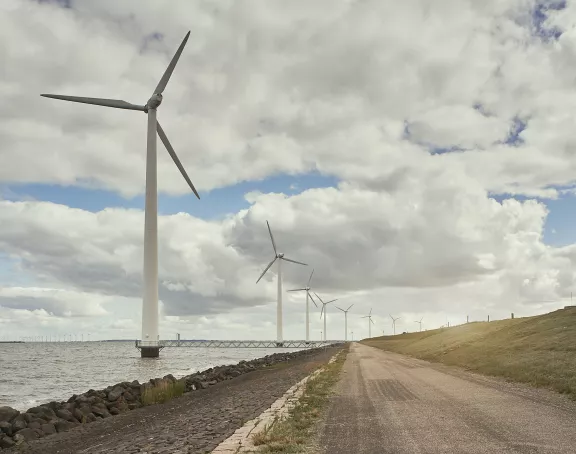Landmark ECJ ruling: subsidiary liability in follow-on cartel cases
On 6 October 2021, the European Court of Justice issued a landmark judgment in the Sumal case, ruling that a subsidiary may under certain conditions be held liable for the damage caused by a competition law infringement for which its parent company has been sanctioned.
In order to hold the subsidiary liable, the injured party must prove that the subsidiary and parent company together constitute an economic unit. This requires the existence of a specific link between the economic activity of that subsidiary and the subject matter of the infringement for which the parent company was held to be responsible. Such an economic link can be established if the infringement by the parent company concerns the same products as those marketed by the subsidiary.
Facts
In its decision of 19 July 2016, the European Commission ('the Commission') found that several truck manufacturers, including Daimler AG, had infringed Article 101 TFEU. Following this decision, Sumal – a party that, between 1997 and 1999, acquired two trucks from the Spanish subsidiary of Daimler AG, Mercedes Benz Trucks España ('MBTE') – brought a claim against MBTE for damages before the Juzgado de lo Mercantil No 07 de Barcelona seeking payment of the sum of EUR 22,204.35 for loss resulting from that infringement. The Juzgado de lo Mercantil No 07 de Barcelona rejected Sumal's claim.
Sumal appealed this decision before the Audiencia Provincial de Barcelona. This court decided to ask preliminary questions to the European Court of Justice ('the Court'):
- With the first three questions, the referring court essentially asks whether an injured party may bring an action for damages either against the parent company sanctioned by the Commission in an infringement decision, or against a subsidiary of that company which is not referred to in that decision, provided that both entities constitute a single economic unit.
- The fourth question – to which the Court responded separately – concerns whether a provision of national law that provides for parental liability only, and does not take into account downward liability, is compatible with EU law.
Court of Justice Ruling
The Court answered the first three questions affirmatively, ruling that a subsidiary may be held liable for the damage caused by a competition law infringement for which its parent company has been sanctioned if both entities are part of the same economic unit. This requires – besides the economic, organisational and legal links between the entities – "a specific link between the economic activity of that subsidiary and the subject matter of the infringement for which the parent company was held to be responsible". The mere fact that the subsidiary was not an addressee of the relevant Commission decision in which the infringement is established cannot be used as a ground to exclude the liability of the subsidiary.
In its reasoning, the Court reaffirmed its considerations from the Skanska judgment, stating that EU law directly governs which entity must provide compensation for damage caused by an infringement, and that the concept of 'undertaking' has the same meaning in public and private enforcement of competition law.
The Court then confirmed that the concept of 'undertaking' within the meaning of Article 101(1) TFEU constitutes an autonomous concept of EU law and is used to designate the perpetrator of an infringement of competition law. The term 'undertaking' must be understood as designating an economic unit even if, in law, that economic unit consists of several natural or legal persons. In order to hold liable any single entity within an economic unit, it is necessary to prove that at least one entity belonging to that economic unit has infringed Article 101 TFEU, such that the undertaking constituted by the economic unit is to be treated as having infringed that provision. If it is established that an entity belonging to the economic unit (and thus, the undertaking) has infringed Article 101 TFEU, the concept of an 'undertaking' and, through it, that of 'economic unit' automatically entails the application of joint and several liability amongst the entities of which the economic unit is made up at the time that the infringement was committed.
The Court however notes an important nuance to the above considerations, stating that an injured party cannot automatically invoke the liability of every subsidiary of a parent company targeted in a Commission infringement decision. The Court agreed with Advocate General Pitruzzella (see point 58 Opinion AG Pitruzzella) that the concept of an 'undertaking' used in Article 101 TFEU is a functional concept, in that the economic unit of which it is constituted must be identified with regard to the subject matter of the infringement at issue. Taking 'conglomerates' as an example, the Court explains that groups of companies may consist of various 'economic units' (e.g. if the different groups are active in several economic fields having no connection between them). The same parent company may therefore be part of several economic units. Whether the subsidiary and the parent company sanctioned for the infringement are part of the same economic unit therefore depends on whether there is a specific link between the economic activity of that subsidiary and the subject matter of the infringement for which the parent company was held responsible.
Consequently, the Court considered that if an infringement of Article 101(1) TFEU has been established as regards the parent company, but the injured party instead wants to hold liable a subsidiary that is not addressed in the infringement decision, the injured party must prove that the subsidiary and the parent company constitute an economic unit. This requires the existence of (i) economic, organisational and legal links between the subsidiary and parent company and (ii) a specific link between the economic activity of that subsidiary and the subject matter of the infringement. To meet these conditions, the injured party has to establish that the infringement by the parent company concerns the same products as those marketed by the subsidiary.
As the subsidiary was not part of the public enforcement proceedings before the Commission, the Court considered that the subsidiary must be able to refute its liability for the harm alleged by relying on any ground that it could have raised if it had participated in the proceedings before the Commission. However, if the action brought against the subsidiary is based on a Commission infringement decision addressed to the parent company, the subsidiary cannot challenge the existence of the infringement before the national court. In such a case, the subsidiary must be given the opportunity to prove that it is not part of the same economic unit which constitutes the undertaking that was sanctioned for the infringement of competition law.
The Court furthermore seems to nuance the General Court's statement in the Martinair case (point 35) that national courts should not give a decision that differs from the Commission decision "as regards the liability or non-liability of persons investigated in relation to the conduct at issue and whose liability was examined in the Commission’s decision". The Court stated that the Commission is free to decide which legal entities belonging to an undertaking that participated in an infringement should be held liable for the infringement. This does however not mean that the mere fact that a subsidiary is not included in the Commission decision means that this subsidiary is not part of the same undertaking and thus cannot be held liable in civil proceedings before a national court.
Finally, the Court confirmed in relation to the fourth (and final) question that national courts should try to interpret national law in a manner that is in conformity with EU law. If that is not possible, EU law prevails over such national rules.
Conclusion
The Skanska judgment raised several new questions, one of which has now been resolved. With this latest judgment, the Court confirms that a subsidiary that is not an addressee of a Commission infringement decision can still be held liable for the damage caused by a competition law infringement for which its parent company has been sanctioned, if both parties belong to the same economic unit. It is up to the injured party to prove that the subsidiary and parent company are part of the same economic unit. This requires the existence of (i) economic, organisational and legal links between the subsidiary and the parent company and (ii) a specific link between the economic activity of that subsidiary and the subject matter of the infringement.
Besides the conclusion concerning subsidiary liability, the Court furthermore changed the notion of the concept of 'undertaking' in this judgment. It states that a corporate group can contain several separate economic units (and thus several undertakings). While in earlier case law the presence of 'control' in the relationship between the subsidiary and the parent was sufficient to assume that these two parties formed part of the same economic unit (and thus the same undertaking; see Akzo) in this judgment the Court supplemented the presence of 'control' with having the 'same economic activity'.
This judgment is unlikely to prove the final word from the Court on public and private enforcement of competition law. Even though this judgment provides clarity on subsidiary liability in follow-on damages claims, this judgment also raises new questions; for example, how should parties deal with the question of international jurisdiction? Will this judgment have the far-reaching implication that an injured party may bring its claim before the court of any Member State where a subsidiary – being part of the same economic unit as the infringing parent company – of any addressee of an infringement decision is domiciled? If so, how can this be squared with the requirement of foreseeability, which is one of the guiding principles of international jurisdiction law, and which according to the Court (see for example CDC/Akzo) should be taken into account in determining whether a national court has jurisdiction to hear a claim.
This article was published in the Competition Newsletter of November 2021. Other article in this newsletter:

